Optoma UHZ35ST
Product Name: Optoma UHZ35ST
Product Description: 4K Laser DLP Projector
-
Design - 8.8/10
8.8/10
-
Video Quality - 8/10
8/10
-
Ports & Connectivity - 9/10
9/10
-
OS, Apps and Features - 8/10
8/10
-
Price / Quality - 8.2/10
8.2/10
Summary
Reviewed at $2,599.00
Pros
- Crisp 4K images
- Low input lag
- Small and easy to handle
- 3D support
Cons
- Not very accurate colors
- No lens shifting or zoom
- No smart or online functionality
- Less than stellar built-in audio
Cheapest Places to Buy :
*We are a reader-supported website. When you buy through links on our site, we may earn a small affiliate commission at no extra cost to you. Home Media Entertainment does not accept money for reviews.*
Introduction
Optoma is one of the most common brand names in the low cost projectors market. And not without reason as their extensive lineup consists of all kinds of projectors, both for home theater and gaming needs. And so today, in our Optoma UHZ35ST review, we are going to test one of their latest releases that promises to offer a compact all-around solution for its category.
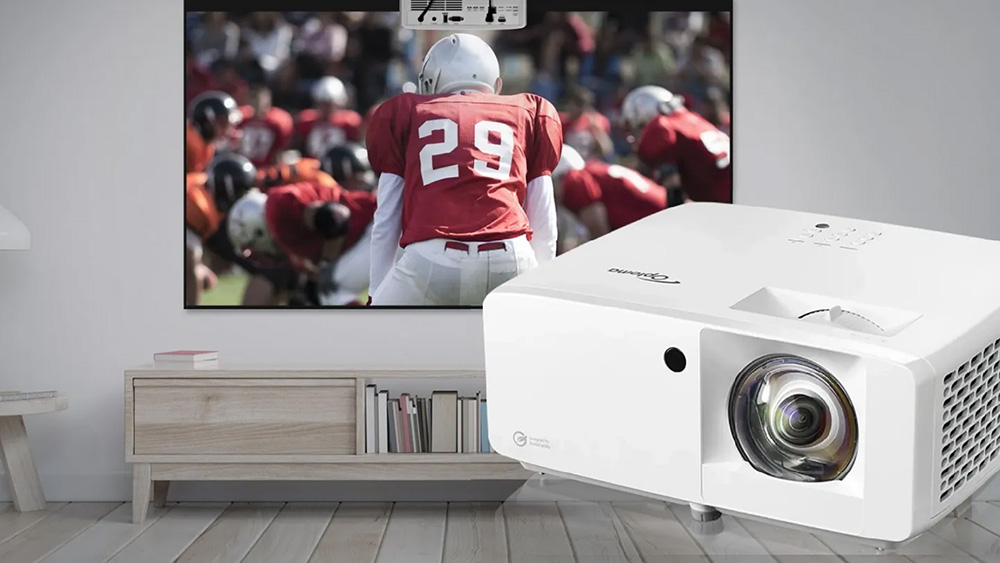
The UHZ35ST is surely an interesting, and yet, strange projector. This is not a portable projector, a gaming projector nor it is meant to be used for a dedicated home theater. And yet it has many of the characteristics of all the above mentioned. As it seems that Optoma could not make up their minds on what exactly they wanted this projector to be exactly.
But we will talk about that shortly. First of all let’s go over the specs real quick to get a good idea of what the UHZ35ST is all about. This is a 4K pixel shifting projector using DLP technology and a laser light source. It is rated at 3,500 lumens brightness and supports HDR10 and HLG content. Lastly it is also 3D capable and comes with a built-in audio system.
Pretty standard specifications for such a unit, although we do see some very glaring omissions that we will talk in depth. So it seems that its performance is what will make or brake this one. Let’s begin…
Design
The UHZ35ST is your typical Optoma design. It looks nice but without trying anything out of the ordinary for a projector of this category.
Looks & Measurements
The projector is using an all white chassis made of plastic. The quality of materials is good enough and the whole construction feels sturdy and without any obvious manufacturing defects.
This is really a compact projector for a 4K pixel shifter as we measured it just 10.79″ x 8.5″ x 4.49″ (274 x 216 x 114 mm) and with a weight of just 6.61 lbs (3.2 Kg). This will allow you to easily handle the projector around without much effort.
One side effect of its small size is the separate AC adapter it uses. And this is something we see a lot lately like in the XGIMI Horizon Pro we reviewed recently. So keep this in mind in case you plan on ceiling mounting it.
Ventilation
Ventilation seems to be adequate as there are plenty of openings for good air flow. As you look the projector from the front air comes in from the left and back sides and exits from the right one keeping temperatures and relatively low figures.
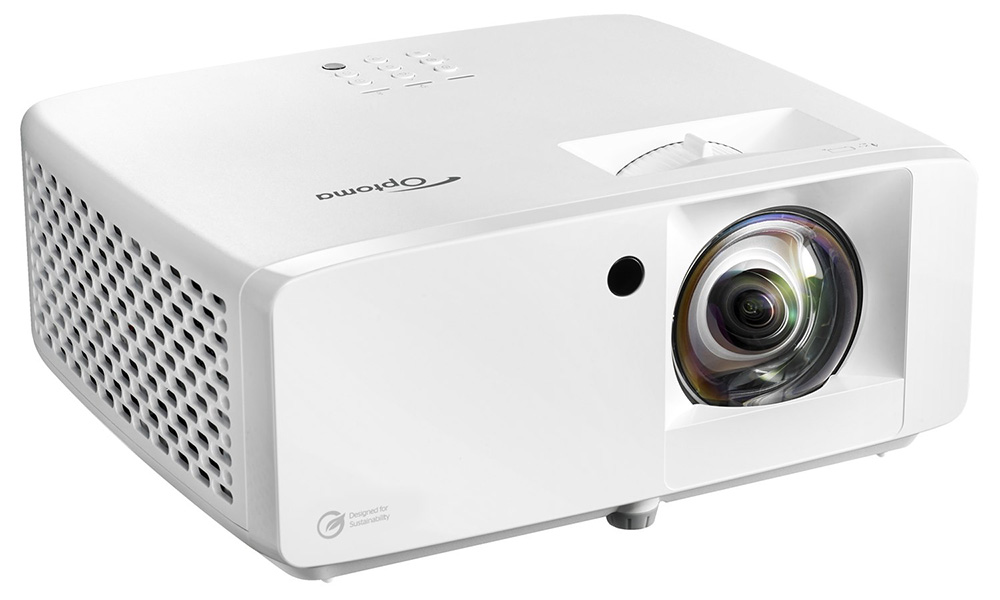
Front Face
The UHZ35ST uses a standard asymmetrical design. The lens is on the right side of the front face while exactly in the middle we find the IR receiver. The rest of the front face is clear of any other elements.
Top Side
At the top, just above the lens, we find the focus ring while towards the back there are the built-in controls. These include the usual navigation buttons along with a few key functions of the projector. These include keystone correction, input selection, menu, power on/off, re-sync and info.
There are also three indicator LEDs for power, lamp condition and temperature as well as a second IR receiver that can be used when mounted on the ceiling.
Back Side
At the back we find all the connection ports along with a big air intake. All connectivity options will be analyzed in the dedicated section below.
The projector comes with three tilt-adjustment feet, one at the front and two at the back. So these can help you level the projector on most surfaces.
Lens Specs
Surprisingly the UHZ35ST is an extremely short throw projector which you typically do not see in such units. The projector has a 0.496:1 throw ratio and uses a fixed focal-length lens. This means that by moving the projector in relation to the screen you can get from a 36 inches screen size up to 300 inches diagonal.
The projector is missing any lens shifting but we do get the usual Keystone correction which allows for vertical and horizontal adjustment of ±15 degrees, four-corner adjustment and 5×3 warping. Just keep in mind that using Keystone correction lowers the overall image quality. So use it only when absolute necessary.
Another interesting feature we find in the UHZ35ST is 360 degrees projection. Usually most projectors allows for two projection positions. For normal or inverted view depending if you place it on a furniture or on the ceiling. This projector comes with four options for front, rear, ceiling-top and rear top positions.
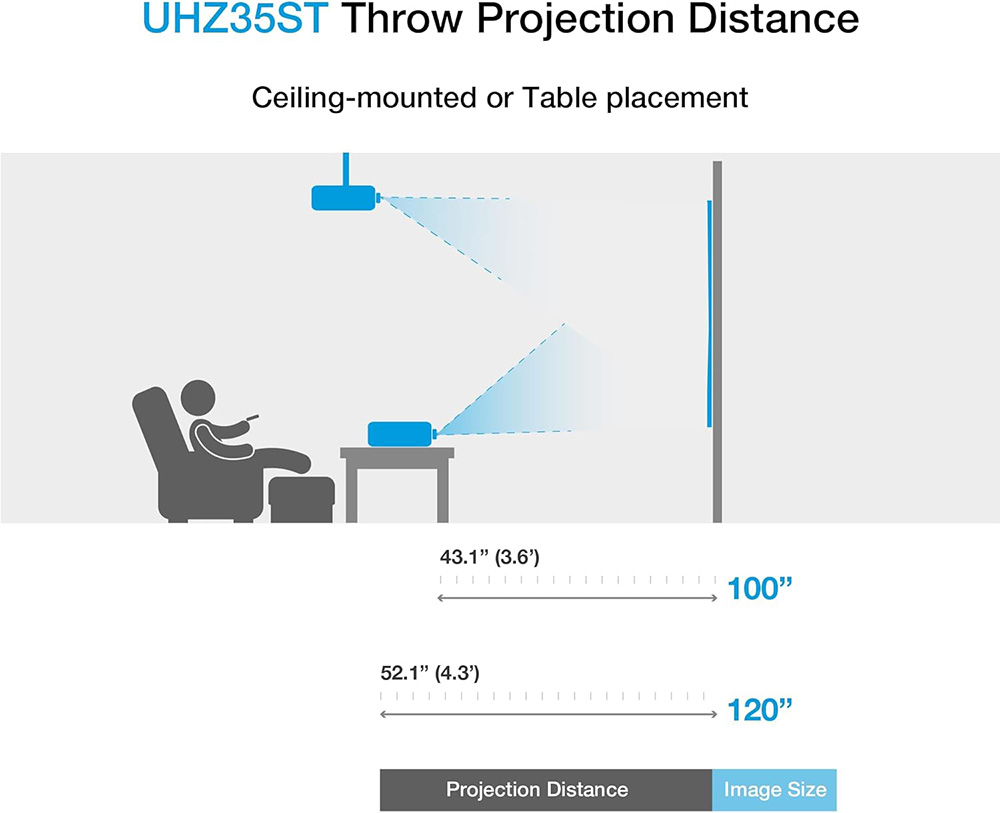
Noise Levels
As for its noise levels Optoma has rated the UHZ35ST at 28dB and 35dB for minimum and maximum levels respectively. And from what we could tell they were spot on with their measurements.
In our case we measured from 3 feet distance, as we usually so, and we got a reading of 35 dB on average.
Light Source Hours
The projector uses Optoma’s DuraCore Laser light engine instead of a traditional lamp. This means that its lamp hours differ from typical lamp based DLP models. As a result you can get as many as 30,000 hours of usage but typically this is possible only in the projector’s Eco mode.
Remote
As for the remote, the one included with the UHZ35ST, is surely one of the most compact remotes we have seen in all out time reviewing projectors.
With a size resembling a credit card the UHZ35ST’s remote could not be more simple and cheap looking. It does come with plenty of buttons covering the most important functions of the projector. But these round buttons are a bit too close for our liking. And considering there is no backlight, trying to find the right command in a dark room can be a very difficult task.
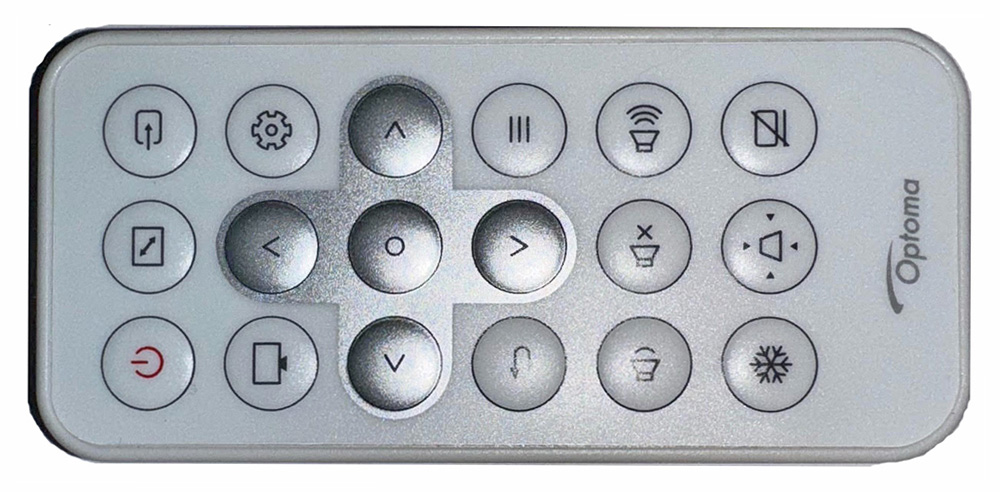
Video Quality
Technology used
The projector is your typical 4K pixel shifting type. And we were expecting as such, as its price could not suggest otherwise.
The projector is using a single 0.65″ 4K UHD DMD DLP chip made, as usual, from Texas Instruments. This is responsible for displacing a full HD 1080p image at very high speeds. This results in a full 4K image that is very close in clarity and quality to a native 4K image.
For those that don’t know what pixel shifting is, it’s a technology that was created in order to bring down the cost of 4K projectors. By offering similar quality to native 4K units, but at much lower price levels, this technology immediately shows the appeal of these units.
These pixel shifting projectors belong in two different categories depending the type of pixel shifting technology used. There are projectors that shift the image only in two positions and these use larger chips and are more expensive. On the other hand those that use the 1920 x 1080 x 4 technology are cheaper but with similar quality.
If you are considering a 4K projector then keep this in mind. In terms of image clarity a pixel shifting model is as good as a native one. It is almost impossible to tell the difference between the two.
To get a taste of the projector’s clarity, sharpness and overall image detail we tried various content in 4K resolution. The UHZ35ST’s images were crystal clear with no loss of detail as is the case with most 4K pixel shifters. Exactly as we expected.
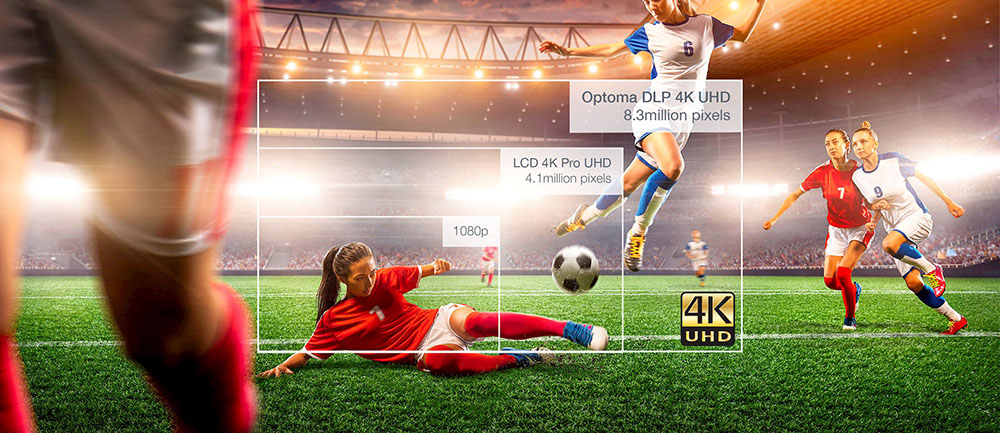
Picture Modes
The projector comes with seven picture modes for SDR content. These are Vivid, Cinema, Game, Sport, Reference, Bright and DICOM SIM. There are also two modes for HDR (HDR and HLG) and one for 3D content.
As usual the Bright one is the brightest of them all but its green tint, which is usual in many DLP projectors, makes it almost completely unusable. Vivid on the other hand was far too cool. We would say that Reference looked to be the most accurate one from those available with Cinema being equally good.
The projector comes with plenty of options if you really want to go deep into calibrating it. There are settings for brightness, contrast, sharpness and gamma. You will also find color and tint adjustments while there are also options for adjusting Brilliantcolor, color temperature and a full CMS (Color Management System).
Lastly there is a Dynamic Black feature that adjusts the projector’s brightness output, acting a bit like a dynamic iris but not as good as the real thing.
Brightness
The UHZ35ST is rated at 3,500 lumens. Strangely Optoma is not mentioning ANSI lumens which is what most brands refer to when they mention their projectors brightness output. So we are not sure how this measurement was taken exactly.
Keep in mind that there are many factors that can affect brightness on a projector, like different light source hours for example. So the numbers we provide are only for giving you a general idea of the projector’s capabilities and yours may differ greatly.
For testing the projector’s brightness output we set its Light Source mode to 100% so we could get the most out of it. Bright was as expected the most bright mode measured at 2,640 ANSI lumens. Vivid came close second at 2,133 ANSI lumens. But both these modes are not so accurate in the first place.
Game and Sport were close third with 1,802 ANSI lumens with Cinema close behind at 1,755 lumens. Reference was by far the least bright one with 821 lumens.
Finally HDR mode was measured at 1,844 ANSI lumens, as was HLG mode.
As we mentioned above, we don’t know how Optoma measured this 3,500 lumens. But from what we saw the UHZ35ST cannot reach that number in any setting.
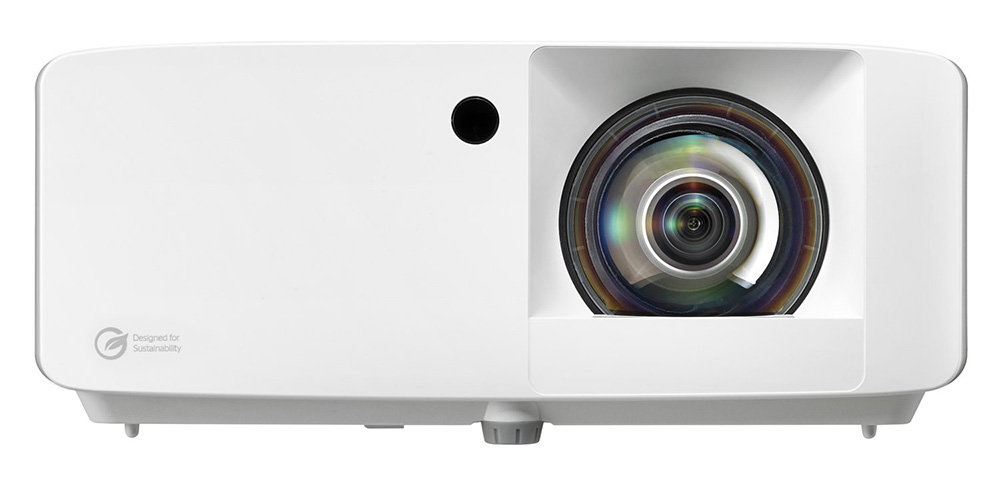
Black Levels / Contrast
One thing that you should expect from a DLP projector of this price range is relatively elevated black levels. Most similarly priced DLP projectors perform the same with very small deviations. So it is not surprising to see the UHZ35ST performing the same.
The unit’s elevated black levels are more apparent if you are using it in a low lit or completely dark environment. With some ambient light instead of a completely dark room things surely improve a lot. But the problem is there no matter what and there is not much you can do about it.
Obviously the problem is more evident with certain content like when displaying space scenes where the grey-ish blacks are very noticeable and can be a bit distracting. On the other hand with colorful and bright lit scenes you are not going to pay so much attention to this.
If you really want better blacks you will have to look much higher in price. There is no other way around this unfortunately. It’s one of the downsides for going for such a low cost 4K unit.
Color Coverage
The projector uses Optoma’s DuraCore Laser light engine. What is interesting is that Optoma meantions only the REC.709 color space for this projector. This is a bit strange considering we are talking about a 4K projector and REC.709 is associated with 1080p HDTV units and not 4K ones.
And our measurements showed why. The projector can cover only 95% of the REC.709 color space. This goes down to just 75.1% for the wider DCI-P3 which is not good at all for this price and this category. A lot of similarly priced 4K projectors can do far better here.
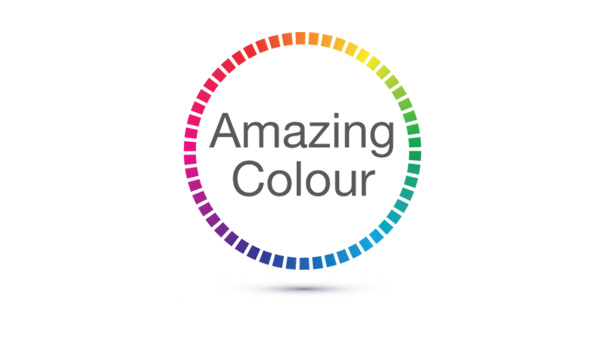
Color Accuracy
Moving on to color accuracy the projector’s out-of-the-box performance was not so good. We already mentioned that both Bright and Vivid modes are far too inaccurate to begin with.
DeltaE errors in both grayscale and color were around 6.2dE on average with some values even reaching 11dE. These numbers we got with the Reference mode used. It is widely regarded that anything above 3dE is visible to the naked eye and thus should be the maximum limit to aim for best accuracy.
After calibration we did manage to reduce the errors with the greyscale and color averaging around 2dE with a maximum of 10.5dE. This showed us that while post calibration image accuracy was far better it was still not great.
From the above we concluded that the UHZ35ST is good but cannot be extremely accurate.
Rainbow Effect
Obviously, with this being a projector review, we need to mention about the rainbow effect. As this is an effect that usually plagues many projectors of similar technology.
During our testing we did notice this at several occasions. It was not a major issue but the effect was very obvious. But it very much depends on each person. If you know you can see this then we strongly suggest you try out the projector first before making a decision. Or at least buy from a retailer that accept returns, just to be on the safe side.

4K UHD / HDR Content
For this review we decided to try the 4K UHD version of Kong: Skull Island. The film comes with HDR10 which the projector supports.
What we saw was the standard level of image sharpness and clarity you would expect from a 4K pixel shifting unit. There is a lot of information at each frame and the UHZ35ST made sure to present everything intact. The lush jungles of Skull Island felt menacing while the tinniest details on the actor’s clothes and skin were visible at any moment. If you are worried if a 4K pixel shifting projector can be as good as a native 4K one, don’t be. This is as good as it gets.
In terms of color accuracy the projector was ok, without managing to impress us. Also black levels was a major issue, but this is a problem with most DLP units in this category. And unfortunately the Dynamic Black option didn’t do much to improve the image quality.
HDR Features
When you are watching HDR content the projector will switch to HDR display mode if it detects the appropriate flag. This applies for both HDR10 and HLG.
One last thing to mention is that Dolby Vision is missing naturally, but we did not expect otherwise. For that you will have to look at the new XGIMI Horizon Ultra which we hopefully will be able to review at some point.
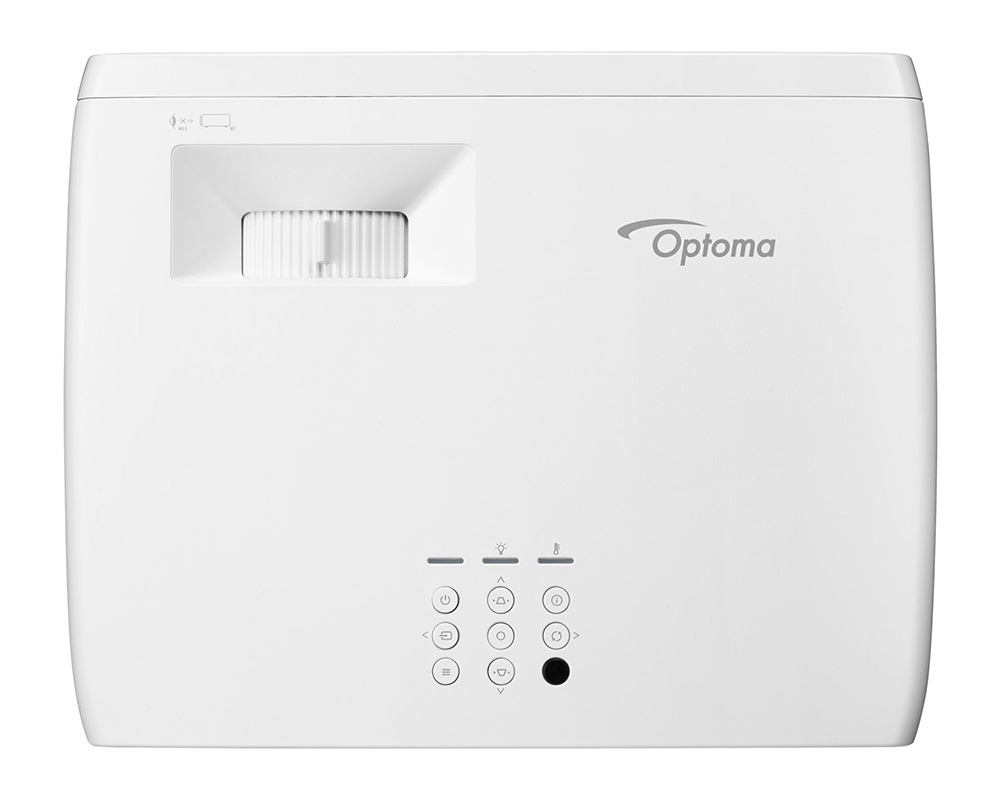
Full HD / SDR Content
Next, it was time to try some 1080p material and as we always do we used our Blu-ray copy of Oblivion for this test. 4K content is obviously the resolution of choice with a 4K projector but there is an abundance of 1080p content still that has not transitioned to 4K. And Oblivion, although it has a 4K release, is our definite content for testing the 1080p capabilities of any projector.
In terms of picture clarity and level of details the UHZ35ST was as good as this aging format permits. There was good amount of detail on screen and everything was clear and without any image abnormalities.
Colors were once more good but not great. On the other hand we felt that the projector did better with black levels and shadow detail. Maybe the lower requirements of SDR content helped the projector to perform accordingly.
From what we saw we felt that the projector does favor SDR over HDR. Not that HDR content was bad. But there were a lot of problems with it, so we see many favoring SDR for better image quality. Which is a bit disappointing for a 4K HDR projector to be honest.
3D Content
The projector market is the last stronghold of 3D and many projectors still support this format. The Optoma UHZ35ST does support 3D and even has a dedicated 3D mode for it.
The projector supports Side by Side (SBS), Top and Bottom and Frame Sequential modes. Also you can use either DLP-Link or 3D Sync depending on the kind of connection you desire.
Keep in mind that when viewing 3D content, brightness always takes a hit due to the nature of the image. But even with this, being able to still watch 3D content in this projector is definitely a major plus.

Picture Settings Suggestions
As always our recommendations worked on our unit and we cannot guarantee they will work with yours. As there are so many factors that can affect the final image.
With that out of the way, if you want to use the projector’s default settings then we definitely suggest you choose the Reference or Cinema modes for SDR content. Reference is the most accurate one but due to its extremely low brightness output you may want to choose Cinema as a better alternative. You will lose a bit in image accuracy but you gain far better brightness.
As for HDR you don’t have much choice as the available HDR mode with automatically engage when the projector detects the appropriate signal.
As for the Dynamic Black option we did try it but didn’t like it much. When used the picture would become far too dim in HDR so we opted to have this turned off. But we do suggest you try it out and decide for yourself.
Input Lag
Optoma does not specifically refer to the UHZ35ST as a gaming projector. Even in their official website they have it under their Home Entertainment section rather than the gaming one. But still the projector has some impressive input lag figures to show off.
Per Optoma’s claims the UHZ35ST’s input lag at 4K@60Hz and 1080p@60Hz is 33.7ms. This goes down to 17ms for 1080p@120Hz and 8.6ms for 1080p@240Hz. With Game mode these numbers are almost cut in half at 17ms for both 4K@60Hz and 1080p@60Hz, 8.6ms for 1080p@120Hz and 4.4ms for 1080p@240Hz.
And it seems that Optoma’s claims were pretty much to the point. We obviously used Game mode during testing and the numbers we got were 17.8ms for 4K@60Hz and 8.9ms for 1080p@120Hz.
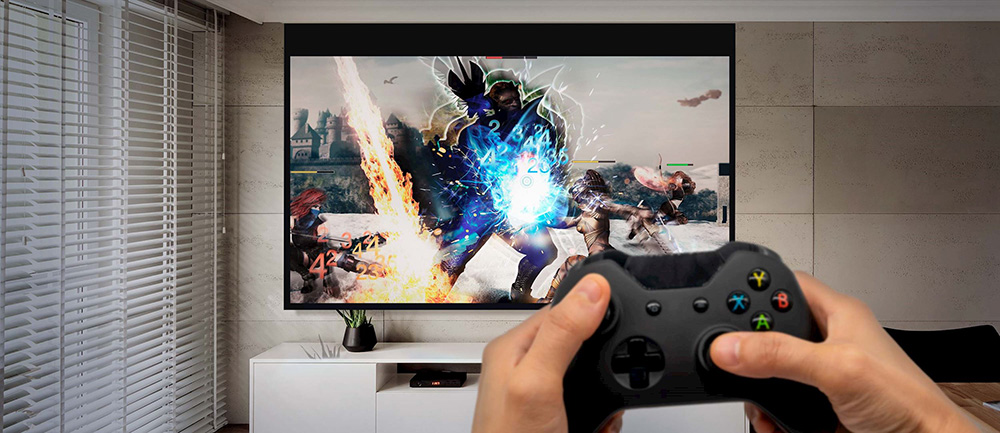
Gaming Testing
For this review we used our PS5 and played Dead Space which is a 60Hz game and F1 2022 which can be played in 120Hz.
Dead Space is a much slower game and in 60Hz the projector did an excellent job at rendering everything on screen instantly. We didn’t sense any kind of delays so all good. But the real challenge is F1 as this is a game that requires razor sharp reflexes.
But the UHZ35ST did equally great here. With its sub-10ms input lag everything felt smooth and instant. Passing those close corners without hitting the walls was fairly easy as all our commends would instantly register on screen.
Overall we can say that the projector offers a perfect gaming experience, even if Optoma does not explicitly advertises it as a gaming one.
Motion Performance
Next we tested the projector’s motion performance. The projector does not feature any kind of motion interpolation or any other motion features. So technically what you see is what you get.
We did try a few different videos in both 24p and 60p and in both cases the projector did good enough. With 24p content the UHZ35ST managed to keep the cinematic feeling of the films we tested without any major abnormalities. The same can be said for 60p content and we cannot say that this unit had major problems to display any content we tried.
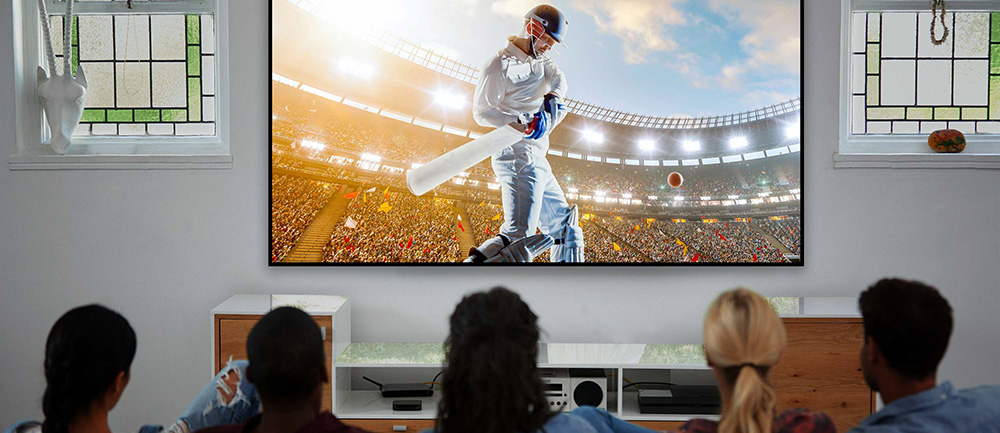
Built-in Audio System
Another element that clearly shows the more portable nature of the Optoma UHZ35ST is the addition of a built-in audio system. Unfortunately the single 15 watts speaker cannot do much more than just render the basics.
You cannot expect from such a low capability system to offer anything impressive, or immersive. The audio that comes out of the projector feels very confined and boxy. Yes, it can get loud but pushing it to the max will make some compression pretty much obvious.
The menu does not offer any kind of EQ settings so what you hear is what you get. For having some fun with friends and family it will do its job. But don’t expect to be impressed by it at any moment.
Ports & Connectivity
As we mentioned above all ports on the UHZ35ST are located at the back side of the projector.
From left to right we find two HDMI ports, one RJ-45 Ethernet port, an RS-232, a USB Type-A for power distribution, a 3.5mm analog stereo output and the power connector.
HDMI Specs
Both HDMI ports are HDMI 2.0 which means they can support up to 4K@60Hz signals. For 1080p signals the projector supports both 120Hz and 240Hz refresh rate. One of the HDMI ports also supports eARC which means you can pass audio to an external audio device if needed.
Wireless Capabilities
The projector does not have any kind of wireless capabilities. So you are not going to find neither WiFi nor Bluetooth in this one.
OS, Apps and Features
Smart Features
The last couple of years we see more and more projectors offering a smart TV environment that unfortunately lacks a lot compared to what we see in modern smart TVs. Although most these Android-based projectors do come with many of the same features their streaming capabilities leave a lot to be desired. This results in the necessity to rely on 3rd party solutions in order to get a fully-fledged online experience.
Maybe this is the reason why Optoma opted to strip the UHZ35ST completely of any smart or online functionality. This is a true offline projector but you still have the ability to connect a streaming dongle as it is shown in the manual.
And to be honest this is probably the best way as these 3rd party dongles can offer far superior streaming capabilities to such a unit.
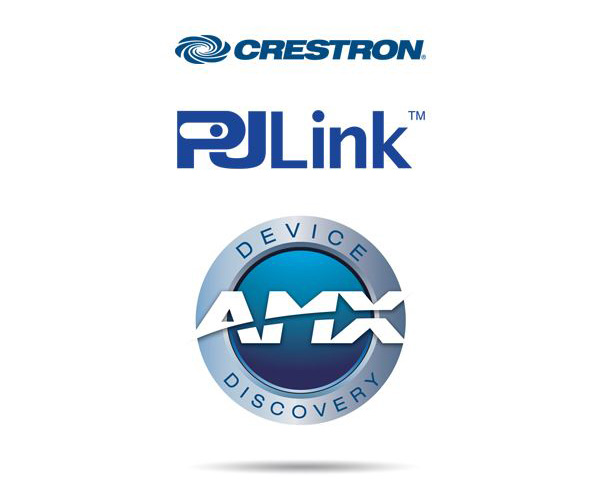
Custom Control
The projector offers plenty of options in terms of controlling and monitoring the projector remotely.
First of all the RS-232 port allows for an extensive set of commands making it simple and easy to manage using any control system. Furthermore AMX compatible Dynamic discovery protocol is incorporated into the projector allowing for easy installation with AMX control systems.
Additionally there is Crestron RoomView using the compatible RoomView software with which you can power on/off, monitor, manage and control the projector from any computer.
Lastly the UHZ35ST is Extron IPLink compatible, as it allows for easy installation with Extron control systems.
Optional UHDCast Pro Dongle
Although not part of the standard accessories, you have the option to connect the UHDCast Pro dongle to this unit.
This dongle is basically a mirroring device which allows you to cast anything from your computer or smartphone to the projector itself. This includes photos, videos, presentations and various documents with minimal effort.
This dongle can be connected to one of the projector’s HDMI ports and is drawing power from the included USB port. It supports both Windows and Mac computers and uses its own app called “EZCast Pro” which you can find in both Google Play and Apple Store.
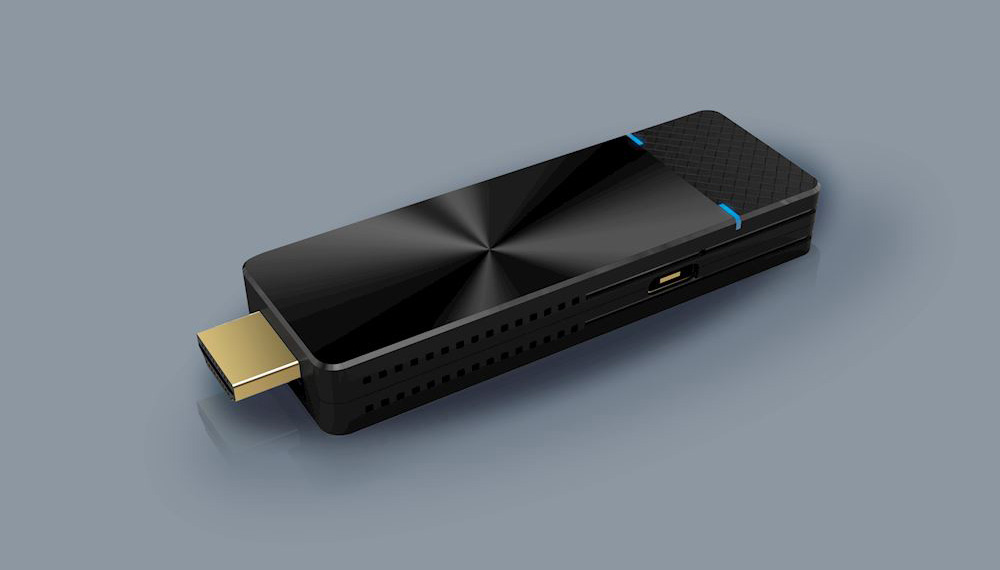
Final Thoughts
We are a bit skeptical what the UHZ35ST was created for. Is it a pure gaming projector? Clearly not as even Optoma has placed it in the home entertainment section. Is it a portable one? We cannot say that either. And here is the big problem with this unit.
When it comes to its strengths, the UHZ35ST has incredibly sharp 4K output which is a characteristic of all 4K pixel shifting projectors. It has very low input lag and supports up to 240Hz making it an excellent gaming projector. It is compact and light enough to handle with ease. And lastly it supports 3D which is hard to find nowadays even in the projector market.
On the other hand this is not a very accurate projector as even after calibration some colors were definitely off. The unit is missing any kind of lens shifting or zoom functionality which surely does not help with easy placement. The projector is also completely stripped of any kind of smart or online functionality which means you have to buy a 3rd party dongle for better or worse. And lastly the built-in audio is very basic and surely cannot do much more than just output sound, in any way possible.
All the above make the Optoma UHZ35ST a hard sell. This is probably the reason why Optoma massively lowered its initial price from $3,299 to about $2,599 at the time of writing this review. With fierce competition in this category, it will be hard for the UHZ35ST to find its place among other better projectors. A price closer to $2,000 would make this a much more appealing choice and one that could create some potential buyers.
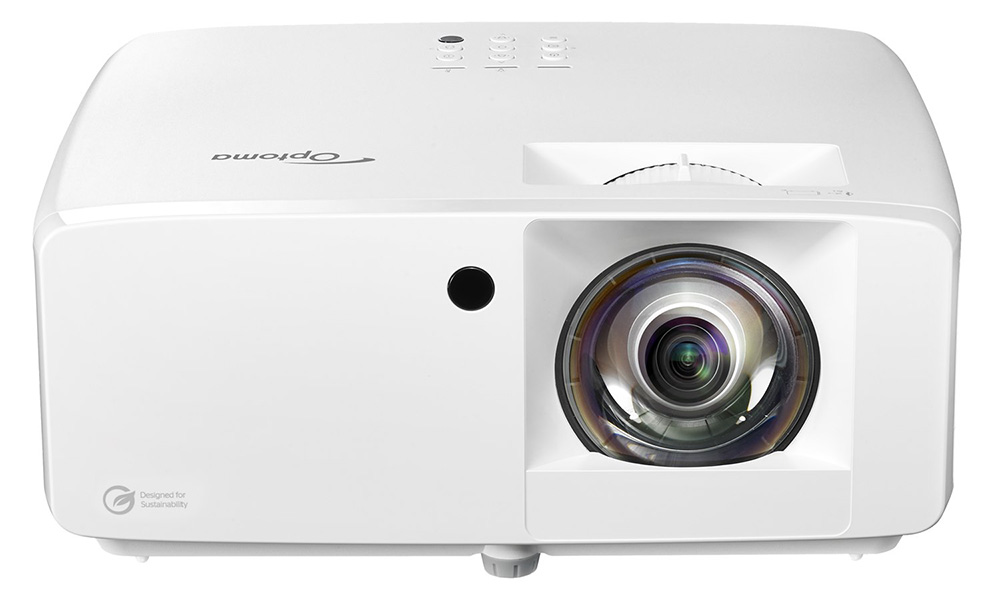
You can find more 4K projector reviews in our dedicated section HERE.
Cheapest Places to Buy :
*We are a reader-supported website. When you buy through links on our site, we may earn a small affiliate commission at no extra cost to you. Home Media Entertainment does not accept money for reviews.*

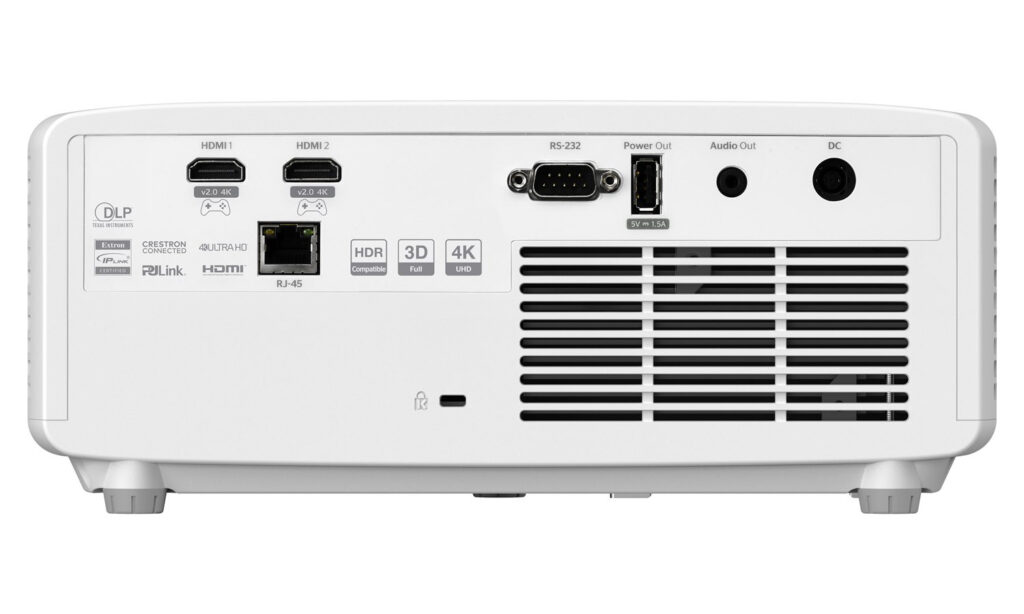





Hi Stratos, wow! That is quite a review you wrote about the Optoma UHZ35ST. Unfortunately from what I read Optoma dropped the ball with this one. It is not very accurate, it does not have online functionality or smart features, its missing a lot of features for easy installation and it is not as bright as Optoma claims. Hmmm. This doesn’t sound like a good offering for $2,500. I can see this only be used as a semi-portable gaming projector as this is what it is good at.
Hey Bob. You are not wrong with your assessment. Indeed the UHZ35ST is missing a lot of features that could make it good at a specific category. But while Optoma does not specifically advertise this as a gaming projector I would say this is the best market this projector should be marketed for.
Optoma had released some nice projectors in the past like the CinemaX series or the UHD35 that I had seen from close. I really don’t know what they were trying to do with the UHZ35ST. Well, I guess everyone can have a less than stellar release from time to time. But if someone doesn’t care much about 4K and want a fast projector for some online gaming it has some potential.
Indeed Chris. The UHZ35ST still can find its audience in the projector market. It’s just that at this price there are many other better options to consider. As I wrote in my review a price closer to the $2,000 mark would be more ideal for this unit.